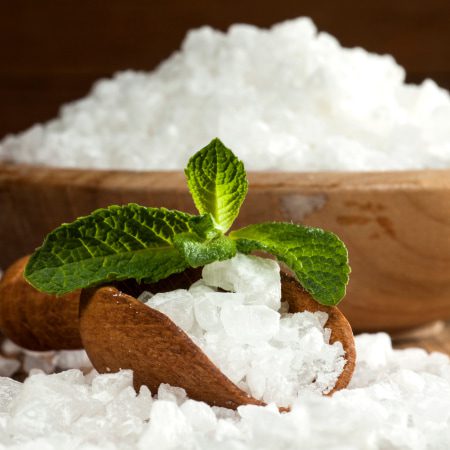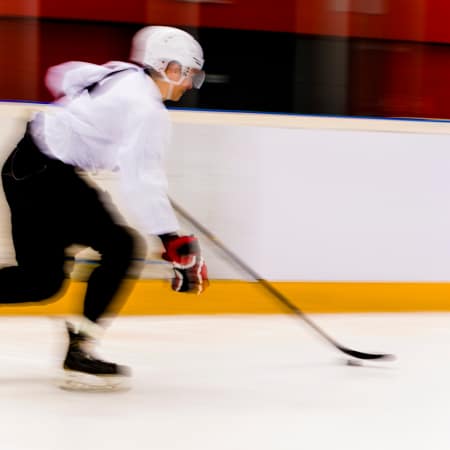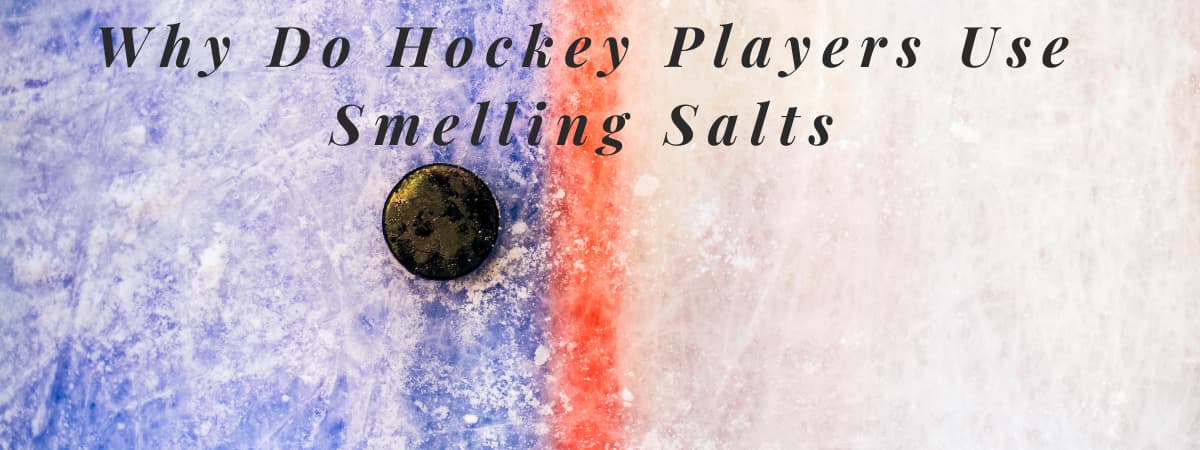Why Do Hockey Players Use Smelling Salts
In this article we explore why do hockey players use smelling salts, a practice popular to sports players. Even moreso, the chemical compound, the use and contraindications of smelling salts in sports. This article aims to educate parents on the components and functioning of smelling salts, as well as address safety concerns and controversies.
If your child plays ice hockey, you may have noticed players using ammonia smelling salts before a game. In this article, we’ll discuss the reasons behind this practice, its ingredients, and the mechanism by which it functions. We will also touch upon the debates and concerns surrounding its use in youth sports.
I couldn’t help but be concerned when my son, who plays on his midget hockey team, expressed a keen interest in using smelling salts like some of his teammates. Ah, the allure of emulating the “cool guys” on the ice! While the idea immediately struck me as concerning, I was surprised to learn that smelling salts are not actually banned in the sport. This opened up a Pandora’s box of questions: Are smelling salts safe for young athletes? What are the pros and cons? It turns out this seemingly innocuous substance has quite a bit of backstory and a range of opinions attached to it. So let’s dive into the icy waters and explore what smelling salts are all about.

What’s in a Smelling Salts: The Ingredients Unveiled
Let’s break down the roster of ingredients in those bad (nasty) boys. Generally, smelling salts are a cocktail of ammonia, H2O, and ethanol. Sometimes, you’ll find them blended with ammonium carbonate and a dash of scent to make it more pleasant, or should I say, less pungent. (1)
It’s all about the ammonia and the irritation. When you take a whiff, the smelling salts irritate the nasal and lung lining, triggering the nervous system response to breathe faster by the respiratory system.
You can’t help but breathe in deeply and quickly by the brain’s reflex to ammonia inhalants.

Smelling salts have been a mainstay not just in the world of ice hockey, but also in football and various sports. While ammonia-smelling salts serve as the active ingredient today, this practice actually dates back to the Roman Empire in the 14th Century.
More so during the Victorian era, Lavender salts, historically called “Sali di lavanda,” served as an age-old therapeutic solution recognized for their stimulating properties. The merging of ammonia’s strong aroma with the crisp fragrance of lavender oil acted as a sensory invigorator during fainting spells or tight corsets, and also helped to cleanse the atmosphere.
Over time, the formulations became more sophisticated, eventually leading to the ammonia-based versions we are familiar with today. In modern times, the first smelling salt bottles specifically crafted for athletic use started appearing, becoming especially popular among amateur hockey teams eager to give their players a quick “wake-up call” during games.
The adoption of smelling salts isn’t confined to the icy rinks. Football players—think legends who need that extra kick to stay alert during high-stakes matches—have also embraced the use of smelling salts.

Always consult healthcare professionals before adding something new to your or your athlete’s pre-game routine.
How Do Ammonia-Based Smelling Salts Work?
So, what’s the net result of the use of ammonia salts? More, your heart rate increases, more oxygen intake rushes to your brain, kicking your mental state into high gear. (1) The perception by many NHL players is the use of smelling salts increases energy levels and focus and a quick burst of adrenaline.
When someone inhales the strong scent of smelling salts, a few things happen physiologically. First, the heart rate temporarily increases, giving a sort of “jump-start” to the system. At the same time, there’s a boost in blood flow to the brain. Think of it as a quick reset for the body and mind. These effects occur rapidly, usually within about 15 seconds of taking that first sniff.
You may find it interesting that smelling salts have been around since the 13th century. They’ve historically been used to revive people from fainting or feeling lightheaded, so they have quite a long track record.

When someone inhales the strong scent of smelling salts, a few things happen physiologically. First, the heart rate temporarily increases, giving a sort of “jump-start” to the system. At the same time, there’s a boost in blood flow to the brain. Think of it as a quick reset for the body and mind. These effects occur rapidly, usually within about 15 seconds of taking that first sniff.
But remember, like any strategy in hockey, it’s not without its risks or controversies.
Always consult a medical professional before introducing something new into your or your child’s pre-game ritual!
Do they Ammonia Smelling Salts Improve Performance?
Other than the fleeting oxygen rush by the pungent smell, and irritation of the nasal passage and upper respiratory membranes, there is not any scientific documentation that ammonia salts increase performance or play beyond a few moments. What we do know…mindset and an individual’s perception of their play potential are sometimes more important than any component of play.

On the other hand, Hockey shifts are so short in a Hockey Game. Maybe those few moments of increased reaction time and brain activity do enable Ice Hockey Players to display increased energy levels.
So, you’re curious about the “how-to” of smelling salts—specifically, how far should these little wake-up wonders be from the nostrils? It might seem like a minor detail, but it can make a big difference in how effective and comfortable the experience is for our young athletes.
Getting the Distance Right
First, this is not medical advice. Always consult a medical professional before introducing something new into your or your child’s pre-game ritual.
You’ve seen the players’ faces—eyes widen like they’ve just seen the Zamboni go double speed. That’s because smelling salts can be potent. Typically, athletes hold the smelling salts about 5 to 15 centimeters (approximately 2 to 6 inches) away from their nostrils.
Why Distance Matters
- Too Close for Comfort: Holding the smelling salt capsule too close could lead to excessive irritation. We’re talking watering eyes and a stinging sensation that might make your kiddo feel like they’ve taken a high stick to the nose.
- Aim for Effective, Not Overwhelming: Too far away, and the effect could be too weak to make any significant difference. In hockey terms, think of it like missing an empty-netter from center ice. You’ve got to hit that sweet spot!
Tips for Safe Use
- First-Time Sniffers: If your young athlete is new to smelling salts, start farther away and gradually move closer as they get accustomed to the sensation.
- Read the Instructions: Yes, even smelling salts come with a “user manual” of sorts. Always read any guidelines or warnings on the packaging.
- Use Sparingly: These are not to be sniffed like a bouquet of roses. A quick, short sniff is generally all it takes to get the desired alerting effect.
- Team & League Rules: Before you make smelling salts a part of the game-day ritual, check with coaches and league officials to ensure they’re allowed.
- Monitor Reactions: Pay attention to how your child reacts. If they seem uncomfortable or show signs of irritation, it might not be the right approach for them.
Remember, parents, we’re all playing the long game here. It’s not just about that immediate jolt of energy; it’s about keeping our athletes safe, informed, and on top of their game. Until next time, keep those skates sharp and those spirits high! ?❄️
Circumstances when smelling salts should not be used:
Even with the widespread use of smelling salts to boost athletic performance, there are circumstances where caution is advised. Medical professionals and athletic trainers often caution against using smelling salts if you have certain health problems. For example, if you’ve recently suffered from head injuries, activating the vagus nerve with the strong smell of salt can lead to complications. Similarly, those with lung membranes or sinus infections should steer clear, as the ammonia can irritate already sensitive areas and open nasal passages, exacerbating the condition.
Additionally, if you’re in cold conditions where the air is dry, the risk of irritating your respiratory system is higher. Smelling salts may also not be the best choice for those with fluctuating or high blood pressure, as their use can cause a temporary spike in your readings. Given these health risks, there’s a good chance that smelling salts may not be suitable for everyone. As always, consult medical professionals before incorporating smelling salts into your or your young athlete’s routine to ensure it’s both safe and effective.
Head Injuries and Smelling Salts:
In cases of suspected head injury, medical professionals typically avoid the use of smelling salts as a form of first aid. While smelling salts are known to provide a temporary boost in alertness, they can mask head injuries by temporarily improving symptoms, which can lead to delayed diagnosis and treatment.
The stimulating effects might give the false impression of improved cognitive function, potentially complicating the medical evaluation process. Therefore, smelling salts are not recommended for head injuries and should not replace appropriate medical care. (2)
Famous professional players who use Smelling Salts
When it comes to cool guys in the world of sports who’ve been known to use smelling salts, names like Mitch Marner in hockey, Tom Brady in football, and Matt Martin come to mind. These athletes span different sports but share a common thread—they’re highly competitive and always looking for an edge to enhance their performance. Whether it’s for that quick burst of alertness before a play or to refocus during crucial game moments, these professionals often turn to tried-and-true methods, including the use of smelling salts.
In summary, the use of smelling salts, formulated from ammonia gas and sometimes ammonia carbonate, has been embraced by a majority of professional athletes across various sports. These crystalline compounds are lauded for their real benefits of instant alertness and temporary performance enhancement. However, it’s crucial to weigh these advantages against potential side effects, especially in situations involving health issues or suspected injuries. Whether you’re an avid hockey parent or just interested in sports science, it’s always advisable to consult medical professionals for personalized advice tailored to your specific needs.
References
(1) (Medically reviewed by Erica Ramirez, PA-C — By Jenna Fletcher — Updated on January 17, 2022, “SmellingSalts: What do smelling salts do, and are they dangerous?” Medical News Today.
(2) Medically reviewed by Alan Carter, Pharm.D. — By Crystal Raypole on June 25, 2019, “Are Smelling Salts Bad for You?” Healthline; https://www.healthline.com/health/are-smelling-salts-bad-for-you



